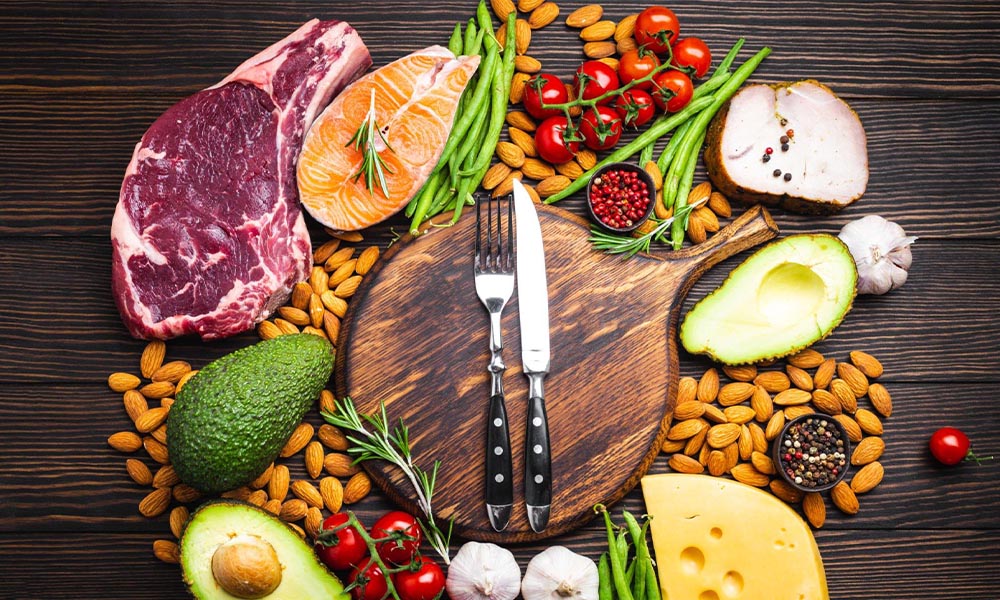The Paleo diet, also known as the Paleolithic diet or the caveman diet, is a way of eating that mimics the diet of our ancestors from the Paleolithic era. The main idea behind the Paleo diet is to consume foods that our bodies are genetically adapted to digest. By following the Paleo diet rules, we can optimize our health, increase energy levels, and maintain a healthy weight.
Table of Contents
ToggleUnderstanding the Principles of the Paleo Diet

The principles of the Paleo diet are simple: eat whole, unprocessed foods that were available to our ancestors. This means avoiding processed foods, grains, dairy products, and legumes. Instead, focus on consuming lean proteins, fruits, vegetables, nuts, and seeds. The Paleo diet encourages the consumption of high-quality, nutrient-dense foods that provide our bodies with the essential nutrients they need to thrive.
The Paleo diet is based on the belief that our bodies have not evolved to properly digest and metabolize modern processed foods. By eliminating these foods from our diet, we can reduce inflammation, improve digestion, and support optimal health. The Paleo diet also emphasizes the importance of consuming organic, locally sourced, and sustainably raised foods whenever possible.
Benefits of Following the Paleo Diet Rules
There are numerous benefits to following the Paleo diet rules. One of the main benefits is weight loss. By eliminating processed foods and focusing on whole, nutrient-dense foods, the Paleo diet can help regulate blood sugar levels, reduce cravings, and promote fat loss. Additionally, the Paleo diet has been shown to improve insulin sensitivity, lower blood pressure, and reduce the risk of chronic diseases such as heart disease, diabetes, and obesity.
Another benefit of the Paleo diet is increased energy levels. By consuming foods that are rich in nutrients and free from artificial additives, our bodies can function optimally and have sustained energy throughout the day. The Paleo diet also promotes a healthy gut microbiome, which is crucial for overall health and wellbeing. Improved digestion, reduced bloating, and increased nutrient absorption are all common outcomes of following the Paleo diet.
The Science Behind the Paleo Diet
The science behind the Paleo diet is rooted in evolutionary biology and human physiology. Our ancestors from the Paleolithic era survived on a diet consisting of meat, fish, fruits, vegetables, nuts, and seeds. This diet provided them with all the essential nutrients they needed to thrive. Modern processed foods, on the other hand, are often high in refined sugars, unhealthy fats, and artificial additives that our bodies are not designed to handle.
Numerous studies have shown that the Paleo diet can have a positive impact on various health markers. For example, a study published in the European Journal of Clinical Nutrition found that following a Paleo diet for eight weeks resulted in significant reductions in waist circumference, body weight, blood pressure, and cholesterol levels. Another study published in the Journal of Internal Medicine found that the Paleo diet improved glucose control and lipid profiles in individuals with type 2 diabetes.
While some critics argue that the Paleo diet is restrictive and lacks scientific evidence, the research supports its health benefits. By focusing on nutrient-dense, whole foods and eliminating processed foods, the Paleo diet provides our bodies with the necessary nutrients for optimal health.
Common Misconceptions About the Paleo Diet
There are several common misconceptions about the Paleo diet that need to be addressed. One misconception is that the Paleo diet is a low-carb diet. While it is true that the Paleo diet restricts grains and legumes, it does not necessarily mean it is low in carbohydrates. Fruits and vegetables, which are staples of the Paleo diet, are excellent sources of carbohydrates.
Another misconception is that the Paleo diet is a high-protein diet. While the Paleo diet does emphasize the consumption of lean proteins, it is not solely focused on protein. The diet also includes a variety of fruits, vegetables, nuts, and seeds, which provide essential vitamins, minerals, and healthy fats. It is important to have a balanced approach to macronutrients while following the Paleo diet.
Paleo-Approved Foods and Ingredients

When following the Paleo diet, it is important to know what foods and ingredients are allowed. The following are some of the main foods and ingredients that are Paleo-approved:
- Lean proteins: grass-fed beef, chicken, turkey, pork, eggs, and wild-caught fish.
- Fruits: berries, apples, oranges, melons, and other seasonal fruits.
- Vegetables: leafy greens, broccoli, cauliflower, carrots, sweet potatoes, and other non-starchy vegetables.
- Nuts and seeds: almonds, walnuts, cashews, chia seeds, flaxseeds, and pumpkin seeds.
- Healthy fats: avocado, coconut oil, olive oil, and ghee.
- Herbs and spices: basil, oregano, turmeric, garlic, and ginger.
- Natural sweeteners: raw honey and maple syrup (in moderation).
By focusing on these Paleo-approved foods, you can create delicious and nutritious meals that support your health and wellbeing.
Meal Planning and Grocery Shopping for the Paleo Diet
Meal planning and grocery shopping are essential for success on the Paleo diet. Here are some tips to help you get started:
- Plan your meals in advance: Take some time each week to plan your meals for the upcoming days. This will help you stay on track and avoid reaching for unhealthy options when you’re hungry.
- Make a shopping list: Before going to the grocery store, make a list of all the ingredients you will need for your planned meals. This will help you avoid impulse purchases and ensure you have everything you need to prepare healthy Paleo meals.
- Shop the perimeter of the grocery store: The perimeter of the grocery store is where you will find fresh produce, meat, and seafood. These are the main staples of the Paleo diet, so focus on filling your cart with these items.
- Read labels carefully: When purchasing packaged foods, make sure to read the labels and avoid any ingredients that are not Paleo-approved. Look for foods that are free from additives, preservatives, and artificial sweeteners.
- Buy in bulk: Buying in bulk can save you money and ensure you always have Paleo-approved ingredients on hand. Stock up on nuts, seeds, and other pantry staples so you can easily create healthy meals at any time.
By following these tips, you can make meal planning and grocery shopping a breeze while staying true to the Paleo diet.
Cooking and Preparing Paleo Meals

Cooking and preparing Paleo meals can be both enjoyable and satisfying. Here are some tips to help you make the most of your Paleo cooking experience:
- Embrace whole foods: Focus on using fresh, whole foods in your recipes. Avoid processed ingredients and opt for homemade sauces, dressings, and marinades to add flavor to your dishes.
- Experiment with different cooking methods: Try grilling, roasting, sautéing, and stir-frying your meats and vegetables to add variety to your meals. These cooking methods can enhance the natural flavors of the ingredients while keeping them nutritious.
- Incorporate herbs and spices: Herbs and spices not only add flavor to your meals but also provide additional health benefits. Experiment with different combinations to find your favorite flavor profiles.
- Plan for leftovers: Cooking larger portions and planning for leftovers can save you time and effort. Use your leftovers to create new dishes or enjoy them for lunch the next day.
- Get creative with substitutions: If a recipe calls for an ingredient that is not Paleo-approved, look for suitable substitutions. For example, you can use cauliflower rice instead of regular rice or almond flour instead of wheat flour.
Remember, cooking and preparing Paleo meals should be enjoyable and flexible. Don’t be afraid to get creative and try new recipes and flavors.
Incorporating Exercise and Physical Activity into the Paleo Lifestyle
While the Paleo diet is a crucial part of achieving optimal health, it should be complemented with regular exercise and physical activity. Our ancestors from the Paleolithic era were constantly on the move, and it is essential for us to incorporate movement into our daily lives as well.
Here are some tips for incorporating exercise and physical activity into the Paleo lifestyle:
- Find activities you enjoy: Whether it’s hiking, cycling, swimming, or dancing, find physical activities that you enjoy doing. This will make it easier to stick to a regular exercise routine.
- Prioritize strength training: In addition to cardiovascular exercise, prioritize strength training to build lean muscle mass. Strength training not only helps with weight management but also improves bone density and overall strength.
- Make movement a habit: Find ways to incorporate movement into your daily routine. Take the stairs instead of the elevator, walk or bike to work if possible, and take breaks to stretch and move throughout the day.
- Listen to your body: Pay attention to how your body feels during and after exercise. If something doesn’t feel right, modify or switch to a different activity. It’s important to listen to your body and avoid pushing yourself too hard.
- Stay consistent: Consistency is key when it comes to exercise. Aim for at least 150 minutes of moderate-intensity aerobic activity or 75 minutes of vigorous-intensity aerobic activity per week, along with strength training exercises at least twice a week.
By incorporating regular exercise and physical activity into your Paleo lifestyle, you can further enhance your overall health and wellbeing.
Tips for Long-Term Success on the Paleo Diet

Maintaining long-term success on the Paleo diet requires commitment and dedication. Here are some tips to help you stay on track and make the Paleo diet a sustainable lifestyle:
- Be prepared: Plan your meals, stock your pantry with Paleo-approved ingredients, and have healthy snacks on hand. Being prepared will help you avoid reaching for unhealthy options when hunger strikes.
- Find support: Surround yourself with like-minded individuals who are also following the Paleo diet. Join online communities, find a workout buddy, or attend Paleo-friendly events to stay motivated and inspired.
- Focus on progress, not perfection: It’s important to remember that the Paleo diet is not about being perfect all the time. Allow yourself occasional indulgences and find a balance that works for you. Celebrate your progress and focus on the positive changes you are making.
- Stay informed: Keep up with the latest research and information about the Paleo diet. This will help you stay motivated and make informed decisions about your health and wellbeing.
- Practice self-care: Take care of yourself both physically and mentally. Get enough sleep, manage stress levels, and engage in activities that bring you joy and relaxation. Self-care is an essential part of maintaining a healthy lifestyle.
By following these tips, you can set yourself up for long-term success on the Paleo diet and achieve optimal health.
Paleo Diet Resources and Additional Reading
If you’re interested in delving deeper into the Paleo diet, there are numerous resources and books available that can provide you with additional information and inspiration. Here are some recommended resources:
- “The Paleo Solution” by Robb Wolf: This book provides a comprehensive guide to the Paleo diet, including meal plans, recipes, and tips for success.
- “The Paleo Approach” by Sarah Ballantyne: For those interested in the science behind the Paleo diet, this book explores the impact of diet on autoimmune diseases and provides a detailed understanding of the Paleo diet.
- Paleo websites and blogs: There are many websites and blogs dedicated to the Paleo lifestyle. Some popular ones include Mark’s Daily Apple, Nom Nom Paleo, and Paleo Leap.
- Online communities and social media groups: Joining online communities and social media groups can provide you with support, recipe ideas, and motivation from others following the Paleo diet.
By exploring these resources and engaging with the Paleo community, you can deepen your knowledge and find inspiration on your journey to optimal health.
Frequently Asked Questions
What is the Paleo Diet, and why is it popular for achieving optimal health?
The Paleo Diet, also known as the Paleolithic or caveman diet, emphasizes whole, unprocessed foods, lean proteins, healthy fats, and eliminates processed foods, grains, and dairy. It’s popular for achieving optimal health as it’s believed to improve digestion, weight management, and overall well-being.
What foods are allowed on the Paleo Diet, and which ones should be avoided?
Allowed foods on the Paleo Diet include lean meats, fish, poultry, vegetables, fruits, nuts, and seeds. Foods to avoid typically include grains, legumes, dairy, processed foods, sugar, and refined vegetable oils.
Is the Paleo Diet suitable for vegetarians or vegans?
The Paleo Diet is traditionally centered around animal products, making it challenging for strict vegetarians or vegans. Some individuals adapt a “Pegan” approach by incorporating plant-based foods while following core Paleo principles.
How can I adapt the Paleo Diet to accommodate dietary restrictions or allergies?
The Paleo Diet can be adapted for dietary restrictions or allergies by substituting prohibited foods with suitable alternatives. For example, if you’re allergic to nuts, you can choose other sources of healthy fats like avocados or olive oil.
Are there any scientific studies supporting the health benefits of the Paleo Diet?
Research suggests that the Paleo Diet may offer benefits such as improved blood sugar control, weight loss, and reduced inflammation. However, more long-term studies are needed for conclusive evidence.
What are some practical tips for transitioning to and maintaining the Paleo Diet successfully?
Transition to and maintain the Paleo Diet by gradually eliminating processed foods and grains, planning meals, incorporating a variety of fruits and vegetables, and finding enjoyable Paleo-friendly recipes. Staying hydrated and listening to your body’s hunger cues are also important.
Can the Paleo Diet be customized to specific fitness goals, such as weight loss or muscle building?
Yes, the Paleo Diet can be customized for fitness goals. For weight loss, adjust portion sizes and prioritize lower-calorie foods. For muscle building, increase protein intake and include more starchy vegetables for energy. Tailoring the diet to individual needs is key to achieving fitness goals.
Conclusion
The Paleo diet offers a comprehensive approach to achieving optimal health. By understanding the principles of the Paleo diet, incorporating Paleo-approved foods into your meals, and embracing regular exercise, you can optimize your health, increase energy levels, and maintain a healthy weight.
While there may be misconceptions and criticisms surrounding the Paleo diet, the scientific evidence supports its health benefits. By following the Paleo diet rules and making it a sustainable lifestyle, you can experience the numerous benefits it has to offer.
So, take the first step towards mastering the Paleo diet rules and embark on a journey towards optimal health. With dedication, commitment, and the right resources, you can achieve your health goals and enjoy the benefits of a Paleo lifestyle.


